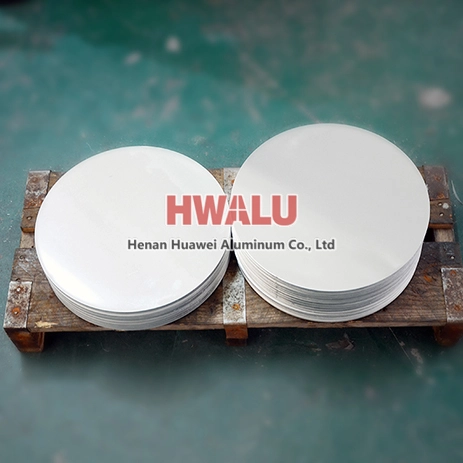The first step: surface pretreatment of aluminum disc circle
The pretreatment stage is an important step for aluminum wafers, and for anodizing aluminum disc circles, this step determines the finish quality and final appearance of the anodized part. These include the removal of contaminants such as dirt and grease on the surface of the aluminum disc circle, which may hinder the removal of minor surface defects. Process chemical or mechanical methods can be performed as a pre-anodizing treatment.

Step 2: Chemical pretreatment of aluminum disc circle
Chemical pretreatment mainly uses a variety of chemical solutions to remove dirt and grease (through acid or alkaline cleaners) as well as surface oxides and heat-treated scales (deoxidizers), which are difficult to clean thoroughly. Afterward, an etching or brightening step is performed to modify the surface texture, resulting in a unique appearance. This involves two operating steps, one is to create a glossy surface or finish the matte surface through an etching step. This step removes a uniform layer from the surface of the aluminum part, thereby reducing minor surface defects. Etching is done by dipping the part in hot sodium hydroxide or trisodium phosphate (alkali etching) or an aqueous solution of ammonium bifluoride (acidic etching).
Step 3: Aluminum disc circle mechanical pretreatment
In addition to the surface and chemical treatment of the aluminum wafers, a final mechanical pretreatment is required. Includes procedures such as abrasive polishing, sandblasting, and shot peening exposure. The purpose of the last step is mainly to improve the fatigue resistance, hardness, and coating adhesion of the aluminum parts. Good coating adhesion of the aluminum disc circle is necessary for the stability of the coating.
